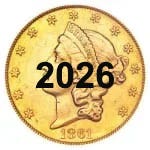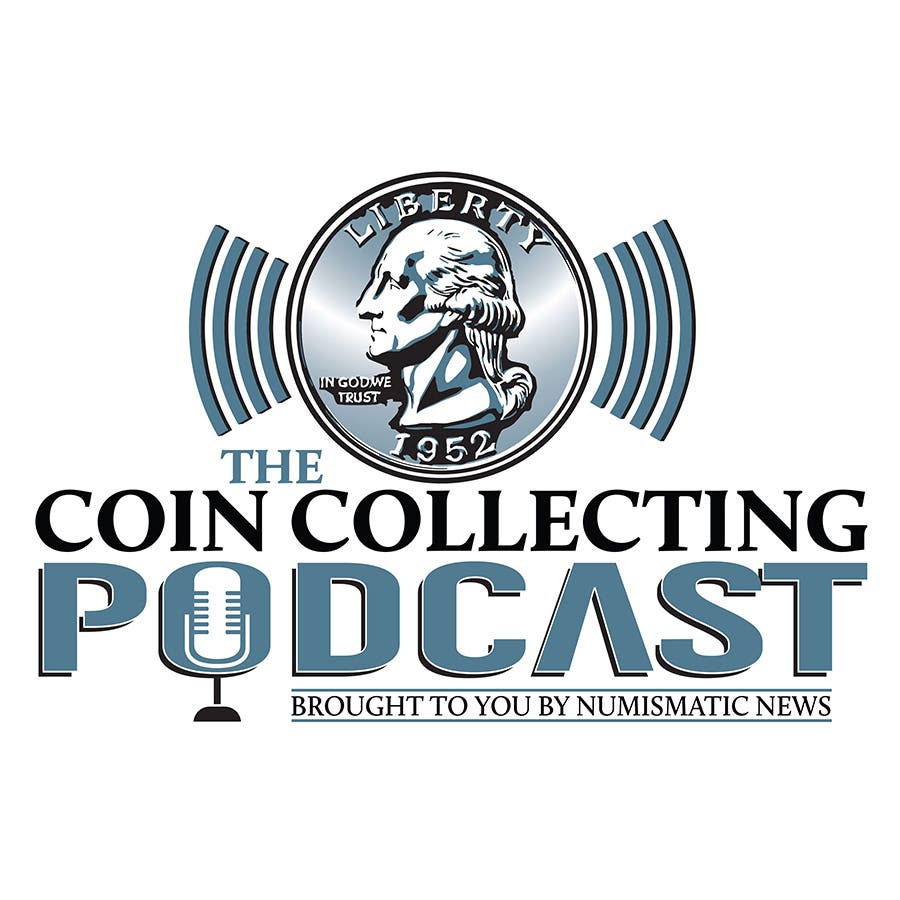Give old commemoratives a look
Despite upturns in the coin market, the high prices for silver and gold, and a whole new generation of collectors who began with statehood quarters, classic commemoratives seem to have been forgotten.
This article was originally printed in Numismatic News.
>> Subscribe today!
Whatever happened to the classic commemorative series? Despite upturns in the coin market, the high prices for silver and gold, and a whole new generation of collectors who began with statehood quarters, classic commemoratives seem to have been forgotten. Prices of many of these coins have come down and collectors just don’t hear much about them anymore.
Classic commemoratives have something to offer any numismatist. The series is filled with history, simple and elaborate designs, many different animals and people and structures. These coins were struck in silver and gold. What’s not to like about commems?
Like Presidents? A number of Presidents appeared on classic commemoratives, long before the new Presidential dollars were considered. A few not-so-popular presidents can be found on commemoratives, too. George Washington, of course, is seen on two of these classic commemoratives: the obverse of the Lafayette dollar of 1900 and also on the 1926 Sesquicentennial half dollar.
Also on the obverse of the Sesquicentennial half is Calvin Coolidge, in office and very much alive at the time of issue. He is the only President to appear on a United States coin during his lifetime.
Lincoln lovers have the 1918 Illinois Centennial half dollar to consider.
Ulysses Grant appeared on a half dollar and gold dollar in 1922, issued on the 100th anniversary of his birth. James Monroe and John Quincy Adams are seen, with conjoined busts on the 1923 Monroe Doctrine half dollar. William McKinley appears on a 1903 gold dollar commemorating the 1903 Louisiana Purchase and also appears on his 1916 Memorial gold dollar. What non-collector could guess that a lesser-known President can be seen on two different coins?
Many famous, and not-so-famous, people appear on classic commemoratives. Every school child knows who Christopher Columbus was. The first commemorative coin, struck in 1892, shows Columbus. The Marquis de Lafayette appears on the only classic commemorative silver dollar. Britain’s Captain James Cook is on the obverse of the 1928 Hawaiian half dollar. Robert E. Lee and Ulysses Grant are seen on the 1937 Antietam half. Daniel Boone appears on a series of half dollars from 1934-1938.
Booker T. Washington appears on his own half dollar, struck from 1947-1951, and is seen with George Washington Carver on the final classic commemorative half dollars of 1951-1954. Even P.T. Barnum and Stephen Foster appear on commemorative half dollars, the Bridgeport and Cincinnati half dollars of 1936.
How about royalty on American coinage? Queen Isabella is seen on the only classic commemorative quarter. It was dated 1893. Sir Walter Raleigh, technically not a royal, appears on the 1937 Roanoke half dollar.
Most any American can identify those famous folks, but who was Sen. Joseph Robinson? John McLoughlin? Admiral Coligny and William the Silent? John Pell? These lesser-known people appear on different commemorative half dollars.
Perhaps you may be interested in topical collecting, such as animals on coins. Apart from eagles, quite a few creatures can be found on classic commemoratives. A badger stands on the 1936 Wisconsin half dollar. A catamount (mountain lion) walks proudly on the 1927 Vermont half, and a grizzly bear on the 1925 California Jubilee half. A grizzly bear, long an emblem of California, also appears on the 1936 San Francisco-Oakland Bay Bridge half dollar. Wise owls perch proudly on the beautiful Panama-Pacific $50 gold pieces, the only pieces of that denomination struck while the United States was on the gold standard. A beaver is seen on the 1936 Albany half and a spouting whale on the 1935 Hudson half dollar.
Many topical collectors enjoy seeing ships on coins. Columbus’ ship, the Santa Maria, appears on the reverse of the 1892-1893 Columbian half dollars. The Mayflower, appropriately, is on the 1920 and 1921 Pilgrim half dollars. Henry Hudson’s Half Moon is seen on the 1935 Hudson half dollar. The Swedish ship Kalmar Nyckel sails on the 1936 Delaware half, and the Nieuw Nederland on the 1924 Huguenot-Walloon half dollar.
Bridges are seen on the 1936 Bay Bridge half – of course – and the famous Burnside Bridge at Antietam on that commemorative half dollar. Statues are found on the 1936 Elgin half and on the 1925 Lexington-Concord half. Maps are seen on the 1936 Cleveland, 1935 Old Spanish Trail and the lovely Oregon Trail half dollars, struck in an extended series from 1926-1939. There is a fanciful rendering of North and South America on the 1923 Monroe Doctrine half.
Buildings of every kind are found on classic commemoratives. The house where Ulysses Grant was born appears on the 1922 half dollar and gold dollar. The first capitol building of the state of Iowa appears on that state’s half dollar of 1946. The Old Swedes Church is on the 1936 Delaware half; the State of California Building is on the 1935-1936 San Diego half; the Old Belfry in Lexington is on the 1925 Lexington-Concord half. The William McKinley Memorial is seen on the 1916 gold dollar. Quite a variety!
Numismatists who study designs can enjoy the differences in the half dollars. The reverse of the 1938 New Rochelle half is as simple as it gets: a fleur-de-lis and mottoes adorn the reverse. The obverse of the Old Spanish Trail half shows a head of a cow, Cabeza de Vaca, along with mottoes.
More elaborate, or cluttered, designs are seen on the 1936 Norfolk half dollar. This small coin is packed with mottoes, dates, lettering, a ship and a royal mace. The 1937 Roanoke half also contains much lettering, along with dates and mottoes.
The lettering on the York County half dollar of 1936 is tall and bordered, as seen on medals; the 1936 Columbia half also looks more like a medal than a coin. Compare the lettering on the 1936 Delaware and 1936 Albany half dollars. Even the lettering on the coins show many variations within the series.
Check out the different styles used on classic commemoratives. The figures on the Rhode Island half dollar almost look cartoonish. A proud eagle stands on the 1935 Connecticut half, and a modernistic bird on the 1936 Bridgeport. Compare the beauty of the Oregon Trail half dollar with the plain 1926 Sesquicentennial half. Some commemoratives are difficult to find in blazing Mint State, such as the Missouri and Monroe, while the Norfolk is almost always seen in high Mint State.
Are you a fan of certain designers? Laura Gardin Fraser designed the 1922 Grant, 1921 Alabama and the Oregon Trail with an assist from her famous husband, James Earle Fraser, designer of the Buffalo nickel. Chester Beach designed the 1935 Hudson and had a big hand in the 1928 Hawaiian half dollar. John Sinnock, designer of the Roosevelt dime, executed the 1926 Sesquicentennial half and designed its companion piece, a gold quarter eagle. And Gutzon Borglum, the sculptor of Mount Rushmore, modeled the 1925 Stone Mountain half dollar.
Some collectors believed that classic commemorativess would grow in popularity when the state quarters series began in 1999. This did not happen. Only a very few state quarter designs are similar to their classic commemorative cousins. The Connecticut half dollar of 1935 shows the Charter Oak in full leaf, while the Connecticut state quarter shows the oak without leaves. The Massachusetts quarter shows the same Minuteman statue as seen on the 1925 Lexington-Concord half dollar.
Even though the half dollars commemorating states show no similarity to their counterpart state quarters, these coins can be great companion pieces. Every state was not commemorated on a classic half dollar, but seeing these coins side by side is a treat and a history lesson. States appearing in the classic commemorative series include Illinois, Missouri, Connecticut, Arkansas, Delaware, California, Maine, Alabama, Vermont, Maryland, Texas, Rhode Island, Wisconsin, and Iowa.
Most of the states on classic commemoratives feature state seals as a major part of the reverse design. State quarters were, by law, not to include state seals as part of their designs. A collection of state seals on coins could be interesting.
With so many types and varieties, famous people and Presidents, history and geography and different topics, why aren’t commems more popular? Astute collectors may do well to begin collecting these wonderful coins before they are rediscovered – and they will be – and the prices skyrocket.
More Coin Collecting Resources:
• Subscribe to our Coin Price Guide, buy Coin Books & Coin Folders and join the NumisMaster VIP Program









